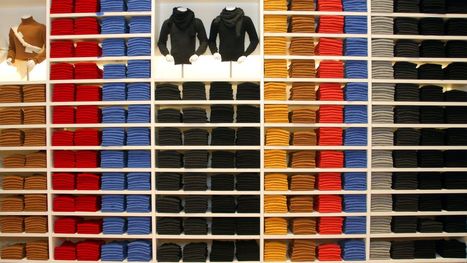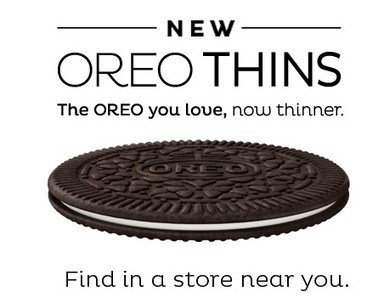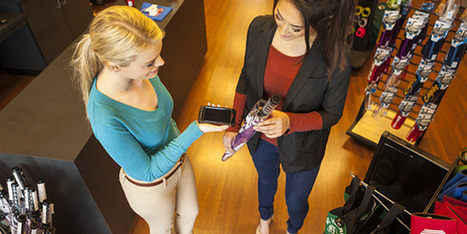 Your new post is loading...
 Your new post is loading...
When a book telling people to throw away almost everything they own becomes a best seller and the start of a spiritual movement, it’s a good indication we’re consuming too much. But it’s hard to reconcile this idea when so many families, even in some of the world’s most durable economies, feel like they are barely getting by. Households have never had so many material goods, yet we hear constant reports of economic anxiety and feelings of hopelessness. The problem is livings standards. Our expectations of what we should own have increased—but incomes, for many of us, haven’t kept up. The disconnect leaves households vulnerable and struggling. There is no doubt living standards are rising. People around the world, of all income levels, are living longer, finding more leisure time, and enjoying more luxuries than at any time in history. Remember, only 30 years ago, air-conditioning was a luxury. Now it’s practically seen as a necessity....
The press is replete with doubters. A prominent NPR host complained about whether or not he would be able to engage in the famous Oreo “twist, lick, and dunk” ritual.
ABC News even conducted a side-by-side comparison of the two cookies rating them on size, twistability (the thin ones broke 75% more often), dunkability (the thin ones took 18 seconds longer to get appropriately soaked), nutrition (the thin ones fared only slightly better), and taste (the regular ones had more of a nice chocolatey taste), with the original version clearly coming out on top.
On top of that, the new Oreo Thins—albeit the company doesn’t talk about it—comes with a 42% price premium over the regular “double-stuffed” Oreo cookies (i.e., a pack of Oreo Thins weighs 10.1 ounce and is priced at $5.49, a regular Oreo pack weighs 14.3 ounce and is priced at $5.49).
So would people buy the over-priced, under-stuffed new Oreo Thins? We think chances are that many people will; here’s why....
When it comes to your business website, your customers may not even register how specific colors of your product package, website elements, or overall site design are influencing them. That’s why it can be difficult to get accurate customer feedback on your color scheme.
But we can draw some general conclusions about colors and their psychological effects. For instance, green suggests wealth, while blue builds trust, which is one of the reasons why you’ll see a lot of blue-based headers on professional services websites (lawyers, etc.).
Shoppers today are overwhelmed with choice. Wherever they go they are overloaded with information, forced to choose between competing offers at almost every hour of the day.
But if vendors are offering all this extra choice to increase buyer satisfaction, they might well be making a mistake. Neuroscientists believe that increasing the comparisons available may actually reduce happiness, for the simple reason that people tend to regret the decision they made because of the additional options they couldn’t pick....
A central problem for marketers is how to convince consumers of their products’ value. How long will customers listen to all the benefits of starting their day with Cheerios before they dismiss everything as manipulative bunk?
According to the 2 professors, Suzanne Shu of UCLA and Kurt Carlson of Georgetown, the answer is the rule of 3: Making up to 3 claims about a product’s value is effective advertising -- any more than that, and people’s cynical defenses kick in....
OK, I admit that the Journeys v Touchpoints doesn't have the same ring as Great Taste v Less Filling. But if you're running a business, it's a lot more important. We talk a lot about the "customer decision journey." But the "journey" concept can be applied much more broadly.
What do I mean by that? It's the series of interactions a customer has with the brand to get something done. And in a multi-channel, increasingly mobile world, those journeys have more interactions embedded within them. Getting the smoothness across those interactions -- continuity of information about a customer, consistency of content -- is critical. Even more so might be eliminating the need for a touchpoint in the first place during the journey (why do I need to sign something in person?). When it comes to keeping your customers satisfied, getting those journeys right is much more important than getting each individual interaction right.
What's really fascinating though is that when we look across industries, getting journeys right brings about an important set of wins ("stacked wins" as my colleague, Dorian Stone says.)...
|
More than 90% of shoppers say price is the top reason they buy an item from a different retailer after visiting a store without making a purchase, according to research from Cognizant. As many as 55% of shoppers leave and go to another retailer’s store if they feel the price of an item is too high.
When it comes to retailers that offer the lowest prices, there are still plenty of reasons consumers can be turned off from making a purchase. Almost half (48%) of shoppers say convenience is the top reason they will not shop at the lowest price retailer. Additionally, 32% of these shoppers prefer loyalty programs at other retailers, while 31% will shop at retailers with a better return policy....
Some 58% of consumers in the United States say they have shopped online while watching TV, according to a recent report from Blackhawk Engagement Solutions.
The report was based on data from an April 2015 survey of a nationally representative sample of 2,608 adults in the United States.
The most popular time for online shopping is between 4 PM and 9 PM, local time, with 48% of respondents saying that's when they do so. Some 37% of consumers admit to shopping online while at work; 18% say they do so often, and 19% say they do so sometimes.
In-Store Behavior - 40% of respondents say they use their smartphone camera to demo, share, and compare products they find in-store. - 19% have purchased a product from a competitor on their smartphone while being in-store. - 38% say Amazon.com is their first choice for comparing prices on their smartphone....
Technology isn't simply something that helps Young People get something done, i.e. make a purchase quickly and efficiently. Technology and interactive media play a role in identity formation and lifestyle. Online shopping doesn't do this for people. It's merely a convenience.
Yet a growing body of research indicates stores that fail to play an influential role within digital channels where young people pre-shop, socialize, and participate in virtual communities first, won't get the sale in the end.
Young People want to do more than consume; they want to co-create, participating in the emerging sharing economy. With the rise of the makers and locavore movements, and even seemingly niche trends like the resurgence of home-based and craft brewing, it's time retail environments built on active consumption....
Consumers love a deal, and even more so if it’s customized just for them, right? Not so fast, says Itamar Simonson, a marketing professor at Stanford Graduate School of Business. Simonson has found that rather than being enticed by them, consumers are skeptical of those personalized offers that flood their inboxes.
His research, “Beating the Market: The Allure of Unintended Value,” was published in December 2013 in theJournal of Marketing Research.
Marketers have long assumed that touting a promotion as “customized,” “based on your past purchases” or “especially for you” will persuade customers that the product will fit better, fulfill more needs or otherwise prove more satisfying than others. But “telling consumers that an offer is tailored for them can backfire” and lower the chance that they’ll bite, writes Simonson, who co-authored the study with Aner Sela of the University of Florida and Ran Kivetz of Columbia Business School....
People are moving to mobile in droves, but market researchers haven't followed. GetFeedback and SurveyMonkey want to change that.
The days of lengthy online surveys are numbered, and the startup GetFeedback and online survey leader SurveyMonkey are both poised to benefit.
Countless millions of dollars are spent validating the mobile revolution with adoption statistics and usage metrics. Ironically, the field of market research itself appears to have overlooked this shift, relying on outdated technology and techniques that are increasingly at odds with mobile attention spans.
According to Forrester Research, just 17% of researchers had taken their survey processes mobile as of December 2012. The most obvious side effect is falling response rates. But businesses also risk alienating existing or prospective customers by seeming out-of-step with their communications preferences. There's a lot of money at stake: A staggering $18.9 billion on a global basis is spent annually on telephone polls, online surveys, questionnaires, and other market research, says the Council of American Survey Research Organizations. Roughly $2 billion is spent on online surveys in the United States alone, according to the market research firm IBISWorld....
|



 Your new post is loading...
Your new post is loading...




















Very thoughtful post and recommended reading. 9/10